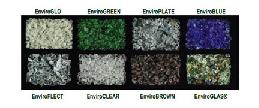
MIT has published it latest findings on the use of concrete in buildings and measures to reduce their carbon footprint. It is common knowledge that US is one of the biggest carbondioxide emitters in the world and the construction and working of buildings makes up for nearly 40 percent of these emissions. As concrete is the most commonly used building material, the report extensively analyzes the impact of this on the climate.
This report is the result of two years of research by MIT Concrete Sustainability HUB. It is a research initiative, born out of collaboration between cement and concrete industries with the MIT research team. One of the breakthrough discoveries in the report is about how we can utilize concrete for reducing any building’s energy needs? Currently concrete is only known for its structural properties, but researchers claim that it can also be used to harness solar energy. By constructing and placing windows in such a way that concrete is exposed to more and more sunlight. We can store solar energy during the day which can be used during nights.
Buildings consume enormous amounts of power for air conditioning during summer and central heating during winters. But as per this MIT report, you can also maintain room temperature in an eco friendly way. The pipes running through different floors, walls and ceilings, can be used for maintaining room temperature by using the solar energy stored by concrete. This would not only reduce the power needs of a building, but would also save us from the harmful CFC released by Air conditioners.
The report is also revolutionizing in how it deals with life cycle assessment of buildings. It is the first major study of its kind in this field. The team claims that it followed a model that was transparent and is open to question and inspection by others. America has already faced huge amounts of criticism for failing to reduce its carbon footprint. It can be safely said that measures suggested through this report will help Americans commit to climate change without halting growth of industry.
Via: MIT




